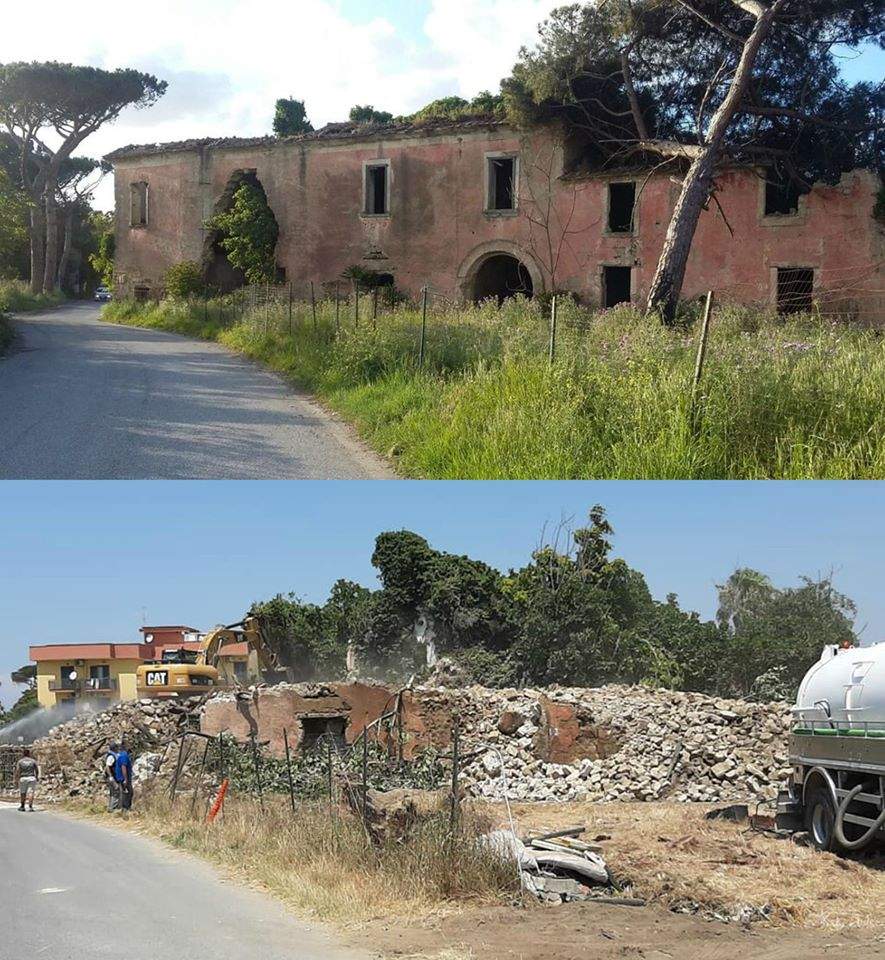In Giugliano in Campania demolished 18th century village to build cottages
Photos are making the rounds on the web of the demolition of Villaggio Zaccaria in Giugliano in Campania, a baronial fiefdom dating back to the 18th century but actually the result of the renovation of a medieval complex in turn built on the remains of a Roman villa. The village was destroyed to make way for a residential complex consisting of 48 cottages, supermarkets, and swimming pools. The residential park has been named “Borgo Zaccaria,” was designed by Open Project srl, and on the company’s website is presented as “housing recovery of dilapidated volumes thanks to the application of the house plan regional law 19/09 with the demolition of existing volumes and the construction of new modern buildings and the extension of 35 percent of the existing volume.”
The complex, in the 18th century, was equipped with a church, dedicated to St. Francis, with late Baroque stucco decorations (again on the layout of an earlier building probably dating back to the 16th century), and consisted of a courtyard around which a number of houses and other buildings were arranged. The demolition was authorized by the municipal administration of Giugliano in Campania, and the question therefore arises whether the complex could not be salvaged. Nothing illegal, all perfectly legitimate: one wonders, however, how appropriate the intervention was.
“It was,” explained on Facebook Fely Di Girolamo, an architect who last year discussed his thesis precisely on the Zaccaria Village, “a real social experiment, like what we know today, for example, as the Real Colonia di San Leucio/Ferdinandopoli. Not to mention the Church of San Francesco. The dome held up by four pillars frescoed with sacred scenes, the stucco and decorations. An architectural beauty. That hamlet had been there since the 17th century. That hamlet told something about the people of Giugliano, about us. The hamlet of San Zaccaria was the subject of my master’s thesis in Architecture, I worked together with other people for about a year to carry out historical research centered on that ’masseria” that was actually anything but a masseria. That hamlet as of yesterday is gone because we are destroying everything, because there are endless things to enhance that we have but we do nothing."
Giving national prominence to the demolition of Villaggio Zaccaria was Pentastellata senator Margherita Corrado, who relaunched local journalist Claudia Procentese’s post, shared hundreds of times, in which she bitterly notes that “Giuliano is known as the land of fires,” but “could be known for something else.”
Claudia Procentese’s photo shows a village building before and after demolition.
 |
| In Giugliano in Campania demolished 18th century village to build cottages |
Warning: the translation into English of the original Italian article was created using automatic tools. We undertake to review all articles, but we do not guarantee the total absence of inaccuracies in the translation due to the program. You can find the original by clicking on the ITA button. If you find any mistake,please contact us.



























